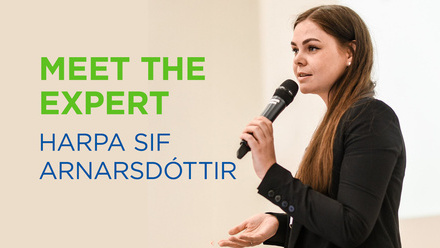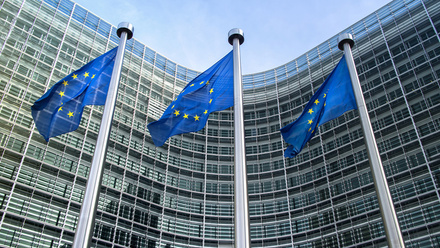Shaping the future: Role and opportunities of EUAs

It’s evident that (higher) education must transform to keep pace with rapid and at least to some extent disruptive societal, economic, technological and political change. To maintain, or better yet, regain public recognition and relevance beyond our academic ivory towers, we need to re-connect with society and industries and provide promising solutions for a world of multiple crises, conflicts and wars. But don’t we have to agree with David Rosowsky, when he recently wrote that "Change in higher ed is slow to occur, when it does, and often only after handwringing, debate, and compromise that results in little change at all"?
As a flagship initiative of the European strategy for universities, the European Universities Alliances aim to pave the way towards the universities of the future. The overarching objectives include a future-oriented transformation of the European Higher Education Area (EHEA) ensuring sustainable impact for society and the economy, promoting European values, and maintaining global competitiveness. But are these alliances already delivering on their promises? Are they unfolding their full potential? Are they serving as role models for structural transformation of HEIs and acting as exemplary change agent for the whole sector?
Short-term effects and early impact
The latest report of the European Commission (January 2025) shows that, just five years after the launch of the first alliances, the initiative is already having a diverse impact on higher education across Europe.
While the first pilot calls primarily rewarded research-intensive institutions, other types of insitutions have since achieved increasing success. For example, our European Universities Alliance E³UDRES² operates as an engaged and entrepreneurial university for smart and sustainable regions. Enabling smart learners to unfold talents is one of the core objectives that is supported by the E³UDRES² talent funnel and the upcoming talent app, with interdisciplinary living labs, bootcamps and mentoring-programmes offered in collaboration with various stakeholders from the knowledge-square as enabling activities. E³UDRES² also aims to enable ent-r-e-novators (entrepreneurs, researchers, educators and innovators) with a future-oriented open mindset as key staff and therefore supports advancing research assessment and (European) quality assurance of higher education towards impact-oriented approaches. We connect entrepreneurial minds with our open innovation hubs and engage in regional communities with our science festivals and a dedicated focus on citizen science.
From the perspective of a university of applied sciences outside a capital region, measurable effects are already evident after just a few years of cooperation in an alliance, such as significantly increased visibility at European and national level, a large increase in (European) third-party funding acquired, increased staff and student mobility, profound co-learning in management and much more. But also colleagues from research-intensive institutions repeatedly emphasise the numerous advantages and successes of EUAs as an important lever for redesigning higher education, driving forward Europeanisation and internationalisation, linking education, research, innovation and services for/with society, breaking down traditional silos and building bridges between countries, cultures and disciplines, and promoting a new academic culture based on cooperation rather than competition.
Sprint and marathon - Existing challenges
Despite successes, the alliances have yet to realise their full potential. This is primarily because they must simultaneously run a sprint and a marathon. The project-oriented nature of EU funding forces them to engage in sprints with strict deadlines for results and milestones, while the repeated emphasis on the long-term vision and mission requires a marathon. To make matters worse, while the current focus is primarily on education, the development of a fully-fledged European Universities Alliance undoubtedly also requires research, innovation and societal engagement.
Critics argue that the initiative risks creating a two-tier system, favouring institutions within alliances over those outside. However this fear is unfounded, at least as long as the alliances are not yet fully established, and the desired cutting-edge solutions have not progressed beyond the prototype stage. Current achievements rely heavily on overstretched, highly motivated staff, while exhaustion and mental health are growing concerns.
To maintain, or better yet, regain public recognition and relevance beyond our academic ivory towers, we need to re-connect with society and industries and provide promising solutions for a world of multiple crises, conflicts and wars.
Possible solutions:
1. Reshaping the role of institutions in times of rapid change and global competition:
To unleash the full potential of alliances, clear commitment from the EU, Member States, regions and participating institutions as well as sustainable funding, including education, research and innovation, are urgently needed. Rather than lengthy strategic revisions every few years, institutions should adopt simple but powerful shared visions for the future, enabling continuous adaptation instead of rigid, infrequent evaluations.
2. Transforming institutions into open innovation platforms:
We need to reshape the role of higher education institutions from providers of degrees and publications that are too often only read in the bubbles of narrow scientific communities into open platforms for collaborative innovation that empower place-based innovation-ecosystems and strengthen global connections. Such platforms encompass different generations of learners, teachers, innovators, researchers, entrepreneurs from different countries and cultures, engaging with industry and the wider public. Yet, academics often remain stuck in linear thinking and try to reduce complexity to solve existing problems, while disruptive innovation quite often happens off the beaten scientific tracks. To survive within global competition, we must deepen, expand and accelerate ongoing activities with impact-focused and opportunity-driven approaches rather than repeating long-lasting discussions about hurdles, barriers and lack of funding.
3. Accelerating impact-focused reforms in teaching and learning:
To succeed, we must be even more ambitious, particularly in how, whom, what, where and when we teach. Key competencies include: Adaptability, creativity, and critical thinking; managing complexity and uncertainty; communicating with people (and machines) outside our academic comfort zone; and interdisciplinary collaboration in real-world settings. Instead of confining students to lecture halls, curricula should emphasise diverse, challenge-based learning, with professors acting as facilitators rather than sole knowledge providers. Initiatives like European Universities Alliances, European Degrees, and the recently announced Union of Skills support higher education institutions to work together in this direction.
4. Fostering diversity and excellence:
The ambitious goals can only be achieved with entrepreneurial approaches that primarily support pioneering changemakers, rather than clinging to "business as usual". Excellence is more important than ever! But excellence always includes being aware that no one is perfect in everything. Therefore, promoting diversity as one of Europe's most important assets is key. While top-ranked institutions focus on fundamental research, others must bridge skills and innovation gaps and serve underserved regions. Smart specialisation should also be applied to higher education, with alliances forming a smart grid across Europe, focusing on unique strengths rather than one-size-fits-all models.
5. Expanding transnational alliances and developing fully-fledged European Universities:
When it comes to the future development of the European Universities Initiative, two aspects should ideally be considered: Broad access: As many students and staff as possible should have the opportunity to develop and maximise their talents within a transnational alliance, sharing expertise shared across and beyond the EHEA. Fully-fledged European Universities: A select number of alliances should evolve into joint "spin-offs"— co-created by member institutions, the EU, and regional governments — with multi-year business plans. These would go beyond project-based funding, becoming globally recognised models of excellence.
Excellence is more important than ever! But excellence always includes being aware that no one is perfect in everything. Therefore, promoting diversity as one of Europe's most important assets is key.
The way forward
Higher education is facing multiple challenges, demographic shifts, funding constraints, political pressures, resistance to change, and more. But as the Austrian designer Stephan Sagmeister once pointed out in The Happy Show: "Complaining is silly, either act or forget!" and once again agree with David Rosowsky: "One thing seems abundantly clear: We are going to be sailing in an entirely new ocean. And we are going to need new maps". So, how are you as an academic, expert or leader, contributing to a future-oriented transformation? And how could your institution leverage European Universities Alliances, European Degrees, and the Union of Skills to go in that direction? Explore more on European Universities Alliances, in our 2025 issue of Summer Forum.
Building bridges in academia
In the summer edition of Forum magazine, dive deeper into the evolving role of European University Alliances (EUAs). Discover how innovative practices and inclusivity are essential to a shared future in education.






